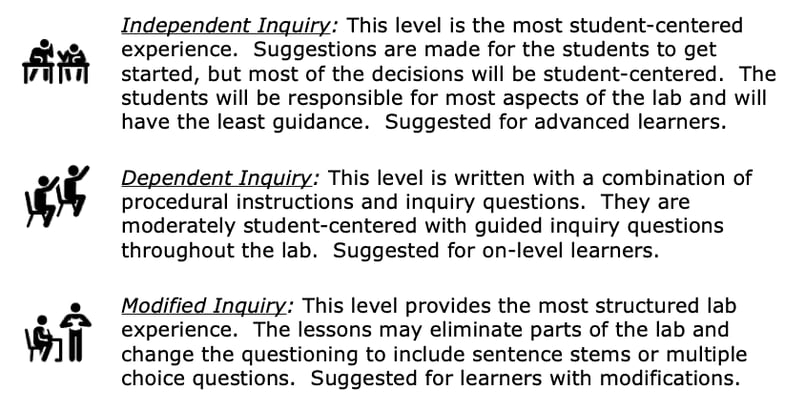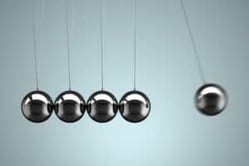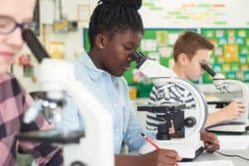Metals, Nonmetals, and Metalloids Inquiry Lab
Middle School Inquiry Lab on Metals, Nonmetals, and Metalloids
In this lab students will observe the physical properties of four elements and classify them into groups: metals, nonmetals, and metalloids.
Each inquiry lab will contain an essential question that will drive the lesson and make students think. For this lesson, the essential question is:
- What are the physical properties that determine if an element is a metal, nonmetal, or metalloid?
BACKGROUND INFORMATION AND MATERIALS LIST:
Students will begin the lab by reading the essential question and background information. This can be done individually, as lab groups, or as a whole class. If you consider lab groups, you also might include some type of whole class formative checks before digging into the lab.

Materials List:
- 1 miniature lightbulb
- 1 miniature lightbulb holder
- 1 c-cell battery holder with lead wires
- 1 c-cell battery
- 5" piece of red lead wire
- 2" Magnesium ribbon
- 1 piece silicon
- 2" strip of aluminum foil
- 1 carbon pellet
- plastic sandwich bag
- hammer or large book
PROCEDURE:
During the lab, students will be encountering three different lab setups and testing items for conductivity, luster, and malleability. During the conductivity test, students will be testing whether their element will help to complete a designed circuit. In order to test luster, the students will make observations as to whether their element exhibits any type of shine. Lastly, the students will test whether their element will be able to withstand contact with a heavy item. The last test will be done in a close environment for safety reasons.
CHECK FOR UNDERSTANDING:
At this point in the lab, students will be checked for understanding by answering questions about their findings. Here are a few that come with the lab:
- Do you think a paperclip would conduct electricity, why or why not?
- Would germanium belong in the metal, nonmetal, or metalloid category? Why?
CONCLUSION
Students will go back to the essential question and write a CER (Claim, Evidence, Reasoning) to conclude the lab. Once completed, students will reflect back on their learning by answering the following questions:
- What properties did the metalloid have in common with the metal?
- What properties did the metalloid have in common with the nonmetals?
- If we tested chalk, would it have properties similar to magnesium or carbon? Explain your answer.
MODIFIED AND INDEPENDENT INQUIRY VERSIONS
All of the Kesler Science inquiry labs come with three different modification levels. Each lab is differentiated using the icons below.
STANDARDS ALIGNMENT
TEKS: 6.6A – Compare metals, nonmetals, and metalloids using physical properties such as luster, conductivity, or malleability.

Download Over $100 in FREE Resources
For Middle School Science
Simply create a login below and gain immediate access to a selection of our Kesler Science product line worth $100 - for FREE. There's a full version of every product type! You'll also join tens of thousands of middle school science teachers who receive timely tips and strategies straight to their inbox.






